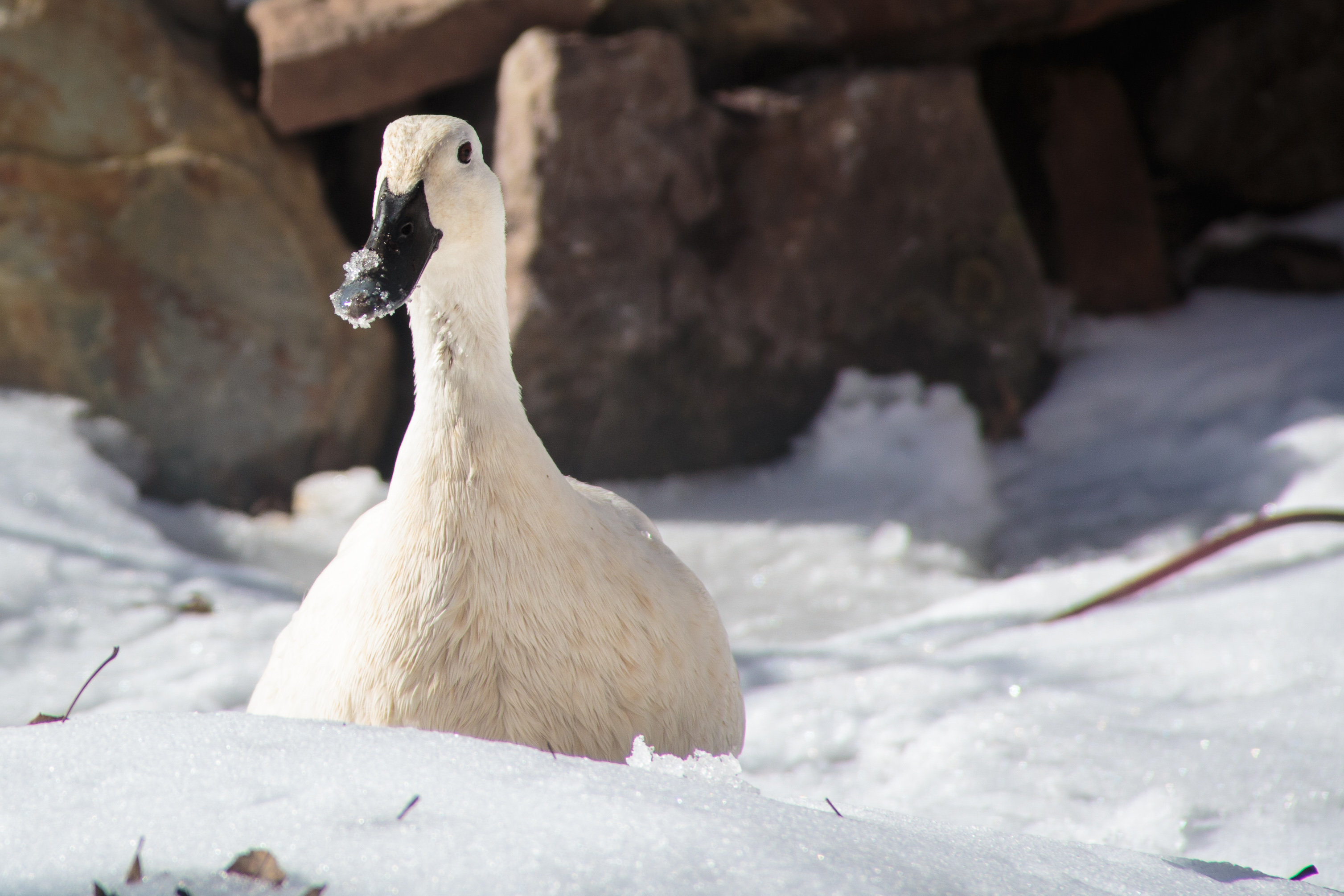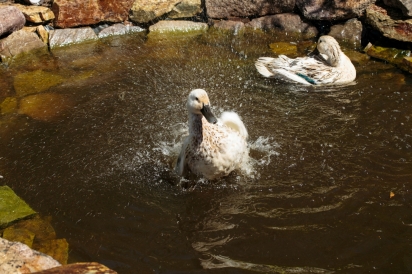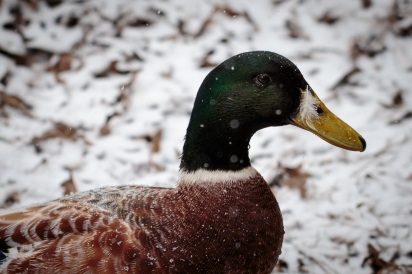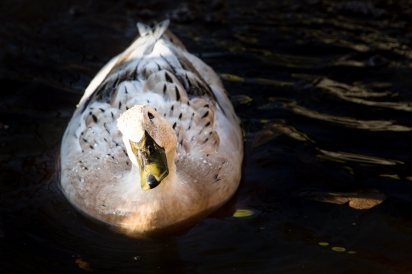A Fowl Battle: Raising Backyard Ducks or Chickens
A few years ago, we went to our friend Andrea’s house for dinner. We had no inkling of the fowl journey this relatively innocuous event would take us on.
Not to disparage Andrea’s exceptional skills as a cook and a host, but we don’t remember much about the night other than the dessert. It was the best crème brûlée we’d ever eaten. It was richer, creamier and more nuanced than any other custard or crème brûlée we’d ever experienced. Our curiosity piqued.
“What’s the secret ingredient?” Susan asked as we scraped our dishes clean. “Petunia,” said Andrea. “Petunia, the duck.”
As it turned out, Andrea had a backyard duck that produced one big, beautiful egg nearly every day of the year. And it was the addition of Petunia’s eggs to our crème brûlée that was responsible for the extra flair.
Duck eggs are larger than chicken eggs and have a higher yolk-to-white ratio, which gives the eggs their distinct rich, creamy flavor. These characteristics make them highly coveted by gourmet bakers and chefs alike. In blind taste tests, duck eggs tend to rank better than chicken eggs, but most people would find it difficult to distinguish between the two.
After eating the sinfully delicious crème brûlée—our christening into the world of backyard ducks—there was no turning back. Three years later, we’re now selfproclaimed “duck evangelists,” and we feel compelled to tell anyone interested in getting egg-laying fowl that ducks are the one true path to their culinary salvation.
Chickens? Sure...If you want to be doomed to a lifetime of less egg production, smaller eggs of inferior flavor, a scratched up yard, and waste (read “poo”) than can’t immediately be applied as fertilizer to your garden plants without burning them.
After our fateful encounter with Petunia’s duck eggs, we didn’t immediately go out and purchase a flock of ducks. Bringing animals into the family (whether for pets or food production) is a serious commitment, and not something we take lightly.
The next few months after dinner at Andrea’s was our “research” phase. We purchased duck eggs produced by local farmers selling through the Swamp Rabbit Café & Grocery, testing how the eggs tasted and performed in all manner of egg recipes (answer: amazingly well). We read books like The Ultimate Pet Duck Guide Book and Storey’s Guide to Raising Ducks to learn as much as we could about raising ducks and the differences between the various breeds.
It’s impossible to make a sweeping generalization about either chickens or ducks, just as it’s impossible to claim that all cars are better than all trucks. There is tremendous variability between various breeds of fowl. Some are bred for meat production, some for egg production and others for sociability or beauty.
We sought to find the “perfect” duck breed for us: one that was a prolific egg layer, hardy, disease and parasite-resistant, low maintenance, long-lived and highly sociable with humans. Given that our yard is a half-acre edible landscape, it was also important to find fowl that wouldn’t destroy our garden plants when foraging.
We narrowed our choices down to a few breeds, all of which ranged from “critically endangered” to “recovering” by conservation organizations. Just as with heirloom gardening and farming seeds—95% of which have been lost forever over the past century—many heritage animal breeds are also being lost as massive international companies have taken over all aspects of food production, selecting only a handful of plants and animals best suited for factory farming.
To help fully grasp the severity of this crisis, let’s consider the analogy of a library. All the heirloom seeds and heritage animal breeds are “books” that were written by our ancestors and passed down to us for safekeeping. Many of these varieties are cultural treasures specifically adapted for regional climates, growing conditions and cuisines. Each generation has a responsibility to preserve these older breeds and to develop new ones. Instead, over the past 100 years, we’ve burned down the library our ancestors gave us and nobody is writing new books.
This is one of the most underreported crises of our time. Just as in nature, biodiversity is also critical to human survival and the sustainability of our food supply. As such, the world desperately needs more heirloom seed producers and heritage animal breeders to both preserve old varieties and help create new ones.
Of all the breeds on our final list, only Welsh Harlequins were listed as critically endangered, which can be loosely translated to mean “help, they’re about to go extinct!”
We started with a few Welsh Harlequin ducks from a local breeder, but accidentally ended up with mostly males (not ideal for egg production since males don’t ovulate). So, to compensate, we soon ordered three more sexed females from the well-known waterfowl breeders at Metzer Farms in California. A chirping box full of fluffy yellow goodness soon arrived, much to our delight. There are few things in this world that can set the heart aflutter like a lapful of sleeping ducklings. Our first flock was now stocked.
At about 75 years old, Welsh Harlequins are a relatively new breed by heritage breed standards. They were originally bred in 1949 by Leslie Bonnet, a duck breeder living near the town of Criccieth, Wales. They’re derived from Khaki Campbells, which are themselves derived from wild Mallards, a duck breed that is commonly seen at ponds and waterways throughout the Southeast.
Like Mallards, their wild ancestors, Welsh Harlequins are beautiful birds. During breeding months when they feature their “nuptial plumage,” the males have iridescent green heads and blue-purple wing bars that shimmer brilliantly in the sunlight. The females are predominantly white with red accents, black speckling and bright blue-purple wing bars.
We didn’t just select Welsh Harlequins for altruistic reasons or their beauty. The breed is also very sociable, especially when raised by humans from day one (our adult ducks still enjoy a good belly rub while napping in our laps). They’re also amazingly prolific egg layers, with each hen producing up to 52 pounds of eggs per year (roughly 300 eggs). By comparison, high-performing chicken breeds can only produce up to 34 pounds of eggs per year, and they require more food than ducks to produce each egg.
Unlike chickens, the wetter and colder it is outside, the more our ducks love it, although they’re not averse to summer heat. Although ducks don’t require a body of water to survive, access to water certainly improves their quality of life and their health. A minimum water requirement for ducks would be a bucket large enough to allow them to dunk their heads and bathe in. (Chickens take dust baths, ducks take water baths.)
As such, the ominous task of installing a 1,100 gallon non-chlorinated, in-ground pool miraculously appeared on my honey-do list one cold winter’s day. Thankfully, there are other duck fanatics in the world who have faced similar predicaments and were able to provide helpful online tutorials to make the task easier. After a few weeks, we completed construction on a lovely new rock-walled pool featuring a cascading waterfall and an inexpensive “skippy biofilter” system that uses bacteria (rather than synthetic chemicals and expensive equipment) to filter out the nitrogen-rich duck waste while keeping the pool water healthy and balanced year round.
Our already-spoiled flock was overjoyed by this new water feature, as were a host of other species that we’d never seen in our garden prior to the pool. The population of frogs, dragonflies, water snails and other water-loving creatures in our yard exploded.
Regardless of the type of fowl, one essential feature they all require is adequate protection from predators. Foxes, coyotes, possums, raccoons and hawks will all make quick work of unprotected chickens or ducks, even in a city. A well-constructed coop for them to sleep in at night and a protected run for daytime activities is crucial for their survival.
Is it worth the trouble to raise heritage breed ducks? For us, the answer has been a resounding “yes.” If you’re interested in getting your own egg-laying waterfowl locally, we’d recommend Izzie’s Pond in Simpsonville or Carolina Waterfowl Rescue right across the border in Indian Trail, NC. Both operations have a wide variety of breeds to choose from and a dire need for local support.
However, even if you don’t have the time or interest to raise and breed these amazing animals yourself, you can still support the local farmers and small-scale producers who do. Thankfully, you can usually find locally produced, organic heritage breed duck eggs at the Swamp Rabbit Café & Grocery, and if you call Belue Farms in Spartanburg (864-578-0446) they can have them waiting for you.
Not a day goes by when we don’t look forward to going outside to walk the gardens or sit by the pool with our flock. Each duck has a unique, quirky personality. Lady Margaret Thrasher, our best forager, will disappear deep into the bushes to hunt insects, grubs and worms. Her location can only be detected by a vigorously shaking bush and the emittance of a series of bizarre Woody Woodpeckeresque “happy noises” as she forages. The ever-vigilant Sir Winston Duckbill valiantly protects his flock from all manner of mortal threats, ranging from shadows to falling leaves. In our opinion, the entertainment value that ducks provide to their human flock mates is another attribute that should not be overlooked. (Who needs a TV when you can watch ducks?)
It’s our hope that more people interested in responsibly and humanely producing their own organic eggs will consider heritage breed ducks before making their fowl decision. However, in a broader sense, the “fowl battle” is not so much about whether chickens or ducks are better, but about what type of food system and world we want to create in the future through the choices we make today. That’s a vote we can all cast three times per day, at breakfast, lunch and dinner. The fork is mightier than the sword.







